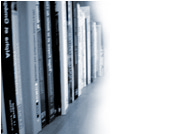 |
|||||||||||||||
|
|||||||||||||||
|
|||||||||||||||
| Boil Water Advisory Mapping Project: An Exploration and Review of Available Data |
|
||||||||||||||
|
H. Isfeld Project objectives The original objective of the Boil Water Advisory Mapping Project was to gather and systematically review information about boil-water advisories from across Canada in order to indicate where drinking water quality and, thus, public health is at risk. In addition to mapping the geographic distribution of compromised drinking water, the intention had been to also demonstrate what diversity exists in the severity of threats to water safety and the duration of exposure to these threats, anticipating that the analysis would confirm differences by region, urban or rural residence, and particularly distinguish the great extent of heath risks faced by many reserve communities, as have been described by First Nations organizations for decades. This analysis would then form the basis for further investigation of health and related effects of water quality issues in the most affected communities, and on women in those communities. Project objectives were revised when an initial scan of existing projects and available data sources found: 1) a national, web-based map of boil water advisories had already been developed by Water Chronicles ( as described below), 2) public access to Health Canada data on First Nations water advisories is very limited, which precluded an analysis of the distribution of those advisories and limited the ability to compare First Nations and non-First Nations communities, 3) additional information on First Nations drinking water was soon to be released1 , and 4) quality and consistency issues for provincial and territorial boil water advisory data were apparent. Thus, the objectives were amended to focus on a description of the BWA data and its limitations for the current Women and Water research, in order to build a foundation for future work. 1 The First Nations and Inuit Health Branch of Health Canada would soon release a report on First Nations drinking water advisories; a poster presentation based on the findings was shared with us and is referenced below. Secondly, at the time of publication, Water Chronicles was in the processes of adding First Nations reserve data to its online map of Canadian water advisories [www.water.ca].Back to top of page |
|||||||||||||||
This website is copyrighted by the
Prairie Women's Health Centre of Excellence, © 1998-2011.
Website design: Pamela Chalmers E-mail: pwhce@uwinnipeg.ca. |
|||||||||||||||
 |
|||||||||||||||


 Full
Report ENG (.pdf) 160KB
Full
Report ENG (.pdf) 160KB